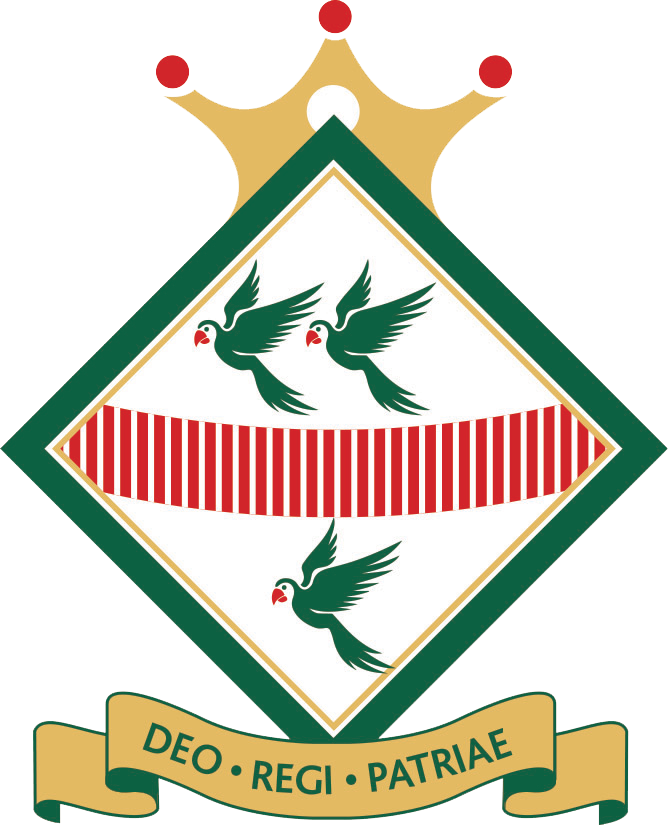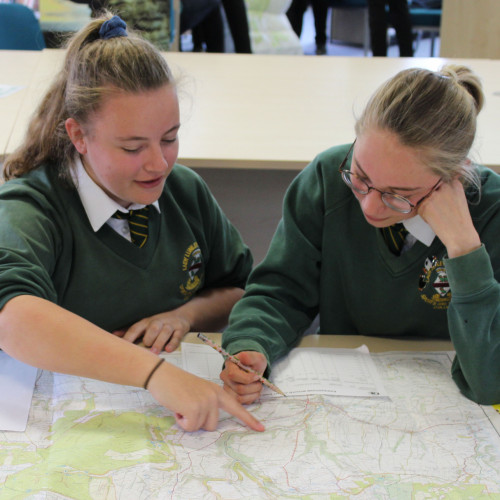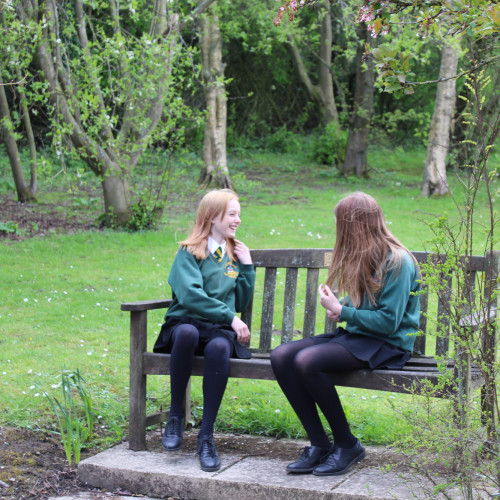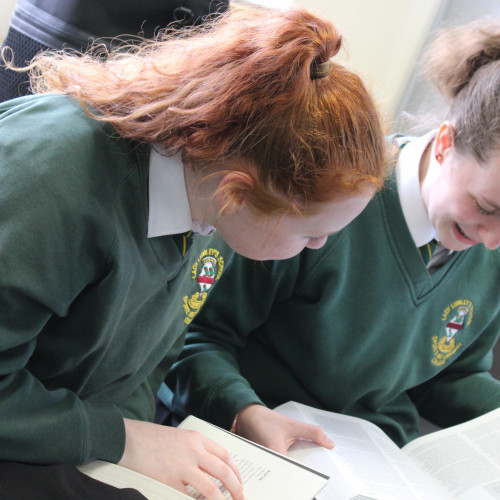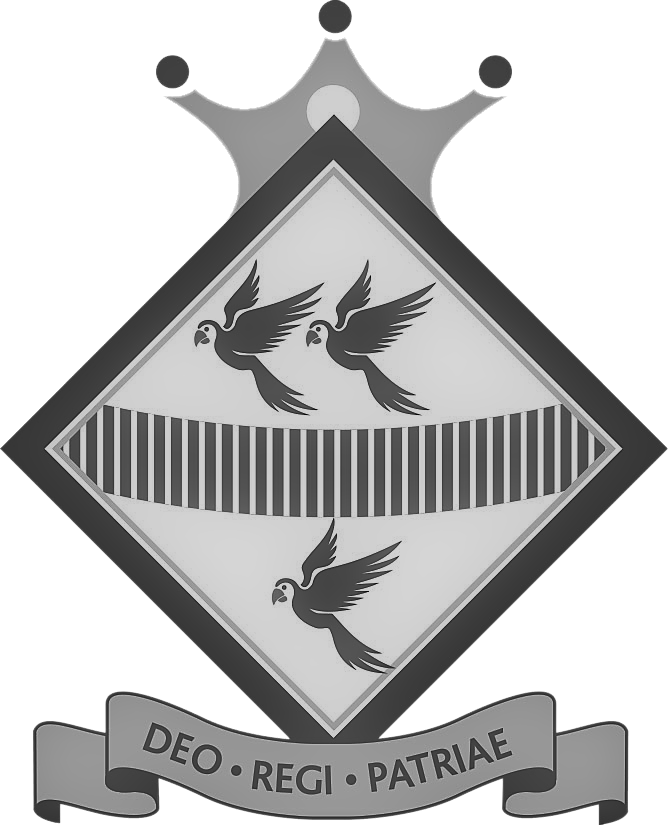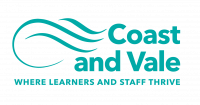Maths
KS3 mathematics
The mathematics curriculum at Lady Lumley’s School aims to ensure that all students:
- become fluent in the fundamentals of mathematics, including through varied and frequent practice with increasingly complex problems over time, so that students develop conceptual understanding and the ability to recall and apply knowledge rapidly and accurately.
- reason mathematically by following a line of enquiry, conjecturing relationships and generalisations, and developing an argument, justification or proof using mathematical language.
- can solve problems by applying their mathematics to a variety of routine and non-routine problems with increasing sophistication, including breaking down problems into a series of simpler steps and persevering in seeking solutions.
Across all years in KS3 students cover the following topics:
- Number
- Algebra
- Ratio, proportion and rates of change
- Geometry and measures
- Probability
- Statistics
Students are taught in broad sets, 2 or 3 in each half-year, and have 7 lessons per fortnight. All students follow the same Scheme of Learning but the different groups can adjust the pace as necessary: there is the expectation that all students access the same key concepts. Topics revisit the previous year's work and then develop them with the introduction of higher-level material. The Drill starters in lessons are used to review material and encourage long-term retention.
Year 7
We build on the Key Stage 2 Programme of Study reviewing and building on all topics as well as introducing new concepts. The year starts with an investigation to set the scene for students to look for patterns and beauty within mathematics.
- Number: Place Value and calculations, Fractions, Decimals and Percentages, Negative numbers, Integers and Prime Factorisation
- Algebra: Introduction to Algebra, Simplifying Expressions and Substitution into Formulas, Expanding and Factorising with one bracket, Solving Equations, Coordinates and Straight Line Graphs,
- Ratio, proportion and rates of change: Proportional thinking
- Geometry and measures: Perimeter and Area, Circumference, Metric Measures, Properties of Angles and Shapes, Symmetry and Transformations
- Probability: Probability in context
- Statistics: Pie Charts, Scatter Graphs and Correlation, Averages and Range
Year 8
- Number: Fractions, Decimals and Percentages (using multipliers), Index Laws, Standard Form
- Algebra: Sequences, Expressions and Formula, Equations and Formula, Introducing Quadratics, Linear Sequences, Straight Line Graphs (y=mx+c)
- Ratio, proportion and rates of change: Ratio and Proportion methods, Exchange Rates,
- Geometry and measures: Angles in Parallel Lines, Area of Circles and Sectors, Volume, Enlargement and Similarity, Conversion Graphs, Speed/Distance/Time, Maps and Scale Drawings
- Probability: Probability, Relative Frequency, Expected Outcomes,
- Statistics: Charts and Diagrams, Two-way Tables, Venn Diagrams
Year 9
- Number: Fractions, Decimals and Percentages, Rounding and Estimating, Decimals and Surds, Integers, Powers and Roots
- Algebra: Sequences and Functions, Expanding and Factorising with one and two brackets, Further Equations and Rearranging Formulas, Inequalities, Analysing Linear Graphs, Parallel and Perpendicular lines, Sequences (linear and non-linear)
- Ratio, proportion and rates of change: Further Proportion in context, Direct and Inverse Proportion
- Geometry and measures: Geometrical Reasoning, Interior and Exterior Angles in Polygons, Pythagoras, Right-Angles Triangle Trigonometry, Bearings, Constructions and Loci, Combinations of Transformations,
- Probability: Probability problems
- Statistics: Frequency Diagrams, Averages and comparing Distributions, Stem and Leaf Diagrams
Sparx Maths
We utilise the Sparx maths online platform and set all KS3 and 4 students weekly home learning through this. Students can also access Sparx maths to complete additional, independent learning and make use of online video clips to support outside of the classroom. For more information, please use the following link: Sparx Maths - A parent's guide to Sparx Maths.
Years 8 and 9
Students are taught in broad sets, 3 in each half-year and have 7 lessons per fortnight. All students follow the same Scheme of Learning but the different groups can adjust the pace as necessary: there is the expectation that all students access the same key concepts. Topics continue to revisit the previous year's work and then develop them with the introduction of higher-level material. Starters in lessons are used to review material and encourage long-term retention.
Enrichment
Each year we enter students across all year groups for the UK Maths Trust individual challenges. In the lead up to the competitions the maths department run after school support sessions to help our students prepare for the challenges. We take part in the UKMT team challenges across KS3, 4 and 5 and compete against other local Schools. We work closely with the Advanced Maths Support Programme and have enjoyed taking some of our students to events led by them. We also run a weekly Chess Club for our students.
Useful links:
GCSE Mathematics
Across Years 10 and 11 students complete a Linear GCSE course with the assessment being taken at the end of Year 11. Sets 1/2 typically follow the Pearson Edexcel Higher GCSE scheme of learning, leading to potential GCSE grades of between Grade 5 and Grade 9. Sets 3/4/5 are typically following the Pearson Foundation GCSE scheme of learning, leading to potential GCSE Grades of between Grade 1 and Grade 5.
Years 10 and 11 – Foundation Tier
- Number: Integers and Place Value, Decimals, Indices, Powers and Roots, Factors, Multiples and Primes, Fractions, Decimals and Percentages, Fractions and Reciprocals, Indices and Standard Form
- Algebra: Algebra: the basics, Expressions, Inequalities, Straight Line Graphs, Linear and Simultaneous Equations, Quadratic Equations, Quadratic Graphs, Harder Algebra
- Ratio, proportion and rates of change: Real Life Graphs, Ratio, Multiplicative Reasoning, Proportion
- Geometry and measures: Shapes and Angles, Interior and Exterior Angles, Perimeter, Area and Volume, Transformations, Right Angled Triangles, Constructions Circles, Cylinders, Cones and Spheres, Similarity and Congruence, Vectors
- Probability: Probability
Year 10 and 11 – Higher Tier
- Number: Checking Calculations and Rounding, Indices, Factors, Multiples, Primes, Standard Form, Surds Fractions and Percentages, Accuracy and Bounds
- Algebra: Equations and Changing the Subject, Graphs, Coordinate Geometry, Quadratics and Simultaneous Equations, Inequalities, Quadratics and Cubics, Further Algebra
- Ratio, proportion and rates of change: Ratio and Proportion, Multiplicative Reasoning and Direct and Inverse Proportion
- Geometry and measures: Polygons, Angles and Parallel Lines, Pythagoras and Trigonometry, Perimeter, Area and Circles, 3D Shapes and Volume, Transformations, Construction, Loci and Bearings, Similarity and Congruence, Graphs of Trig Functions, Further Trigonometry, Circle Theorems, Circle Geometry
- Probability: Probability
- Statistics: Data, Cumulative Frequency, Box Plots, Histograms
GCSE Specification: GCSE Maths - Edexcel - BBC Bitesize
Sparx Maths
We utilise the Sparx maths online platform and set all KS3 and 4 students weekly home learning through this. Students can also access Sparx maths to complete additional, independent learning and make use of online video clips to support outside of the classroom. For more information, please use the following link: Sparx Maths - A parent's guide to Sparx Maths.
Enrichment
Each year we enter students across all year groups for the UK Maths Trust individual challenges. In the lead up to the competitions the maths department run after school support sessions to help our students prepare for the challenges. We take part in the UKMT team challenges across KS3, 4 and 5 and compete against other local Schools. We work closely with the Advanced Maths Support Programme and have enjoyed taking some of our students to events led by them. We also run a weekly Chess Club for our students.
Useful Links
https://www.bbc.co.uk/bitesize/subjects/z38pycw
A Level Maths
The course develops skills in three areas of mathematics; pure maths, statistics and mechanics. Pure maths extends students’ understanding of familiar topics such as coordinate geometry, trigonometry and algebra, whilst introducing new topics such as calculus. Statistics includes data handling and probability. Mechanics covers the study of forces and motion.
A Level Maths Specification
https://qualifications.pearson.com/en/qualifications/edexcel-a-levels/mathematics-2017.html
A Level Further Maths
The course develops skills in three areas of mathematics; pure maths, statistics and decision mathematics. Pure maths extends the core pure maths covered at A level, whilst introducing new topics such as complex numbers. Statistics also extends the concepts covered at A level, while decision maths studies algorithms and networks.
A Level Further Maths specification
Level 3 Core Maths
Core Maths is a relatively new type of qualification. It is designed for students who have passed GCSE Mathematics at grade 4 or above, but who have not chosen to study A level Mathematics. Students will learn some new topics, but it mostly involves maths they will have already used at GCSE level. Where it differs from GCSE is its focus on developing the skills students need to apply maths to the kinds of real-life problems they will meet in study, work and life. Core maths is studied over two years. It’s equal in size to an AS level and is studied as a fourth subject.
Core maths specification
Enrichment
Each year we enter students across all year groups for the UKMT individual challenges in Year 12 and 13, our Sixth Form students can take part in the Senior Maths Challenge.
Every Thursday after School we run a Key Stage 5 drop-in to support all Key Stage 5 mathematicians.
Useful Links
